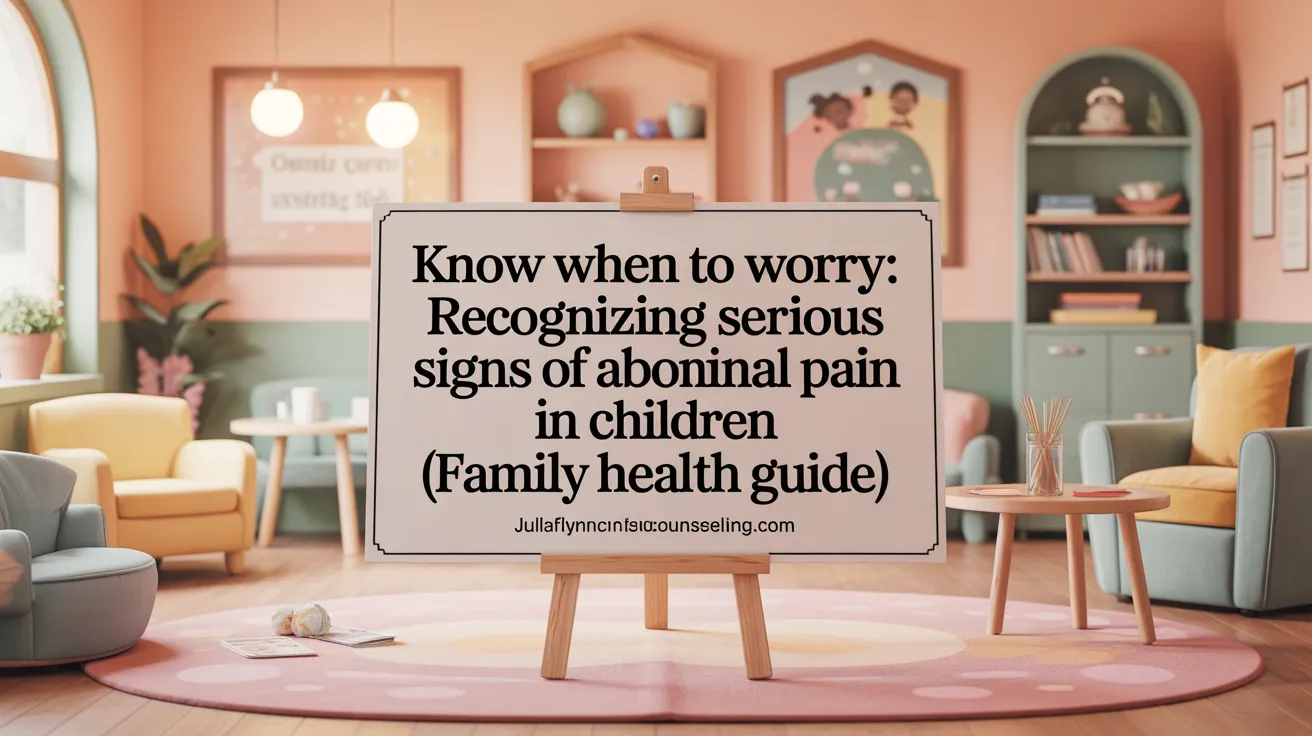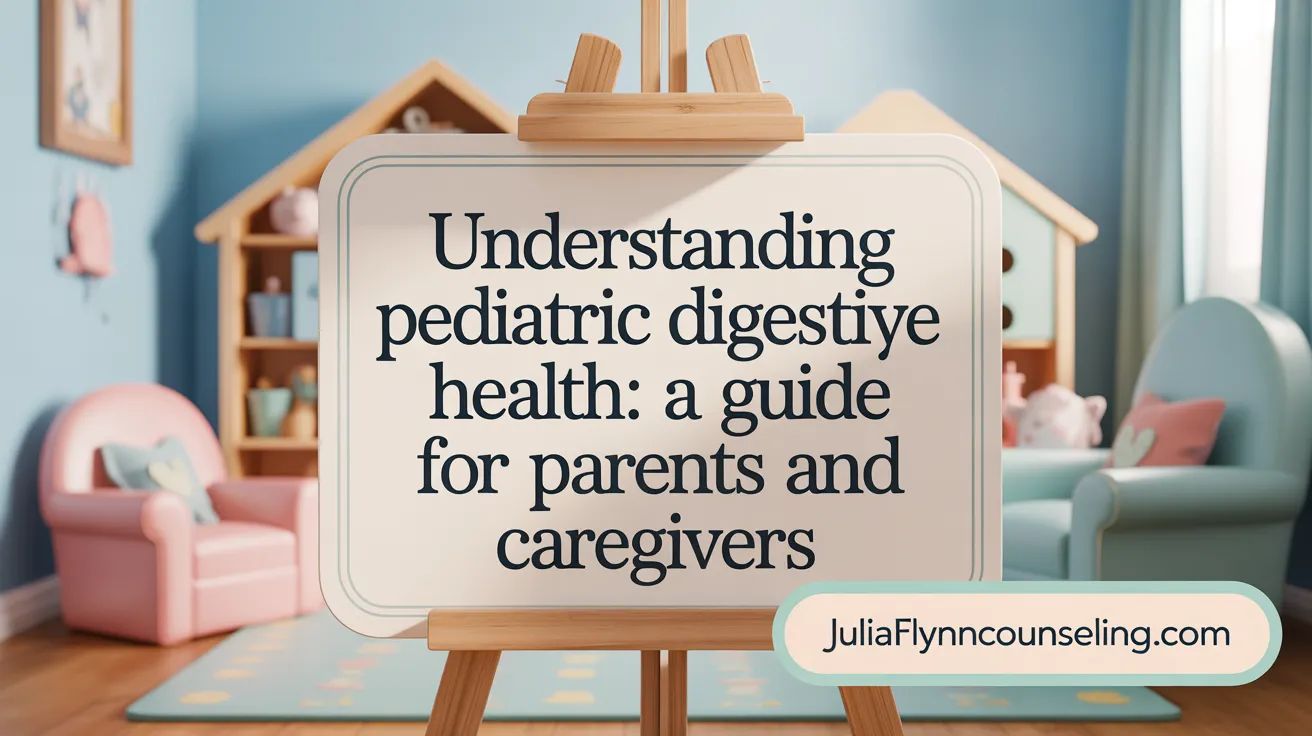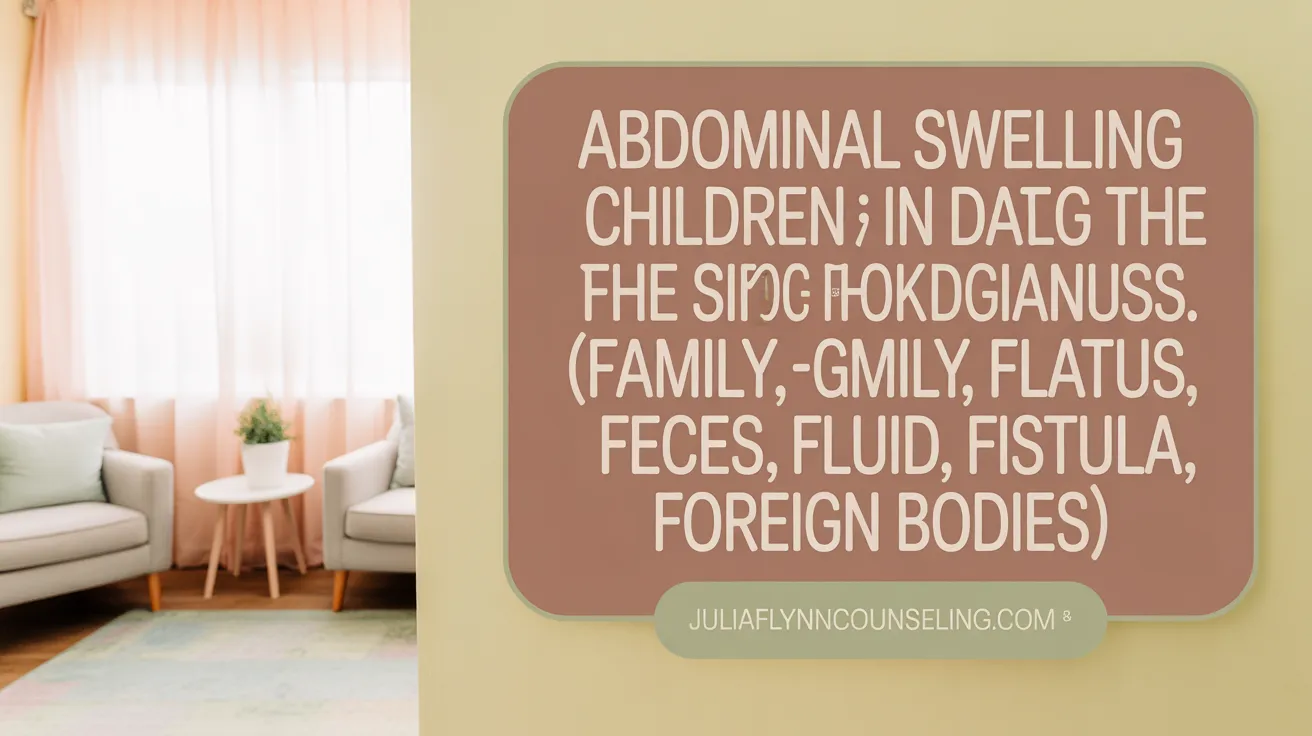Introduction to Abdominal Pain in Children
Abdominal pain is one of the most frequent complaints among children, causing concern for parents and caregivers. Understanding the common triggers, how to recognize symptoms, and knowing when to seek medical care is vital. This article provides an educational overview of pediatric abdominal pain, covering various causes from minor issues like constipation and indigestion to more serious conditions such as appendicitis, and offers guidance on diagnosis and management to support children's health and well-being.
Common Causes of Abdominal Pain in Children
What are common causes of abdominal pain in children?
Children experiencing abdominal pain often face a variety of conditions, ranging from mild to urgent medical issues. The most frequent cause is gastroenteritis, commonly known as stomach flu, which presents with watery diarrhea, cramping, nausea, and abdominal pain, often accompanied by fever.
Constipation is another common culprit, characterized by infrequent bowel movements, hard stools, and associated pains such as stomach aches or bloating. Poor fluid intake and low fiber diets frequently contribute to this condition.
Systemic viral illnesses, like infections outside the GI tract, can cause abdominal discomfort. Examples include streptococcal pharyngitis (strep throat), pneumonia affecting the lower lobes, and urinary tract infections, all of which may trigger abdominal symptoms.
In addition, appendicitis stands out as the leading surgical cause of acute abdominal pain. It usually begins with pain around the umbilical area that later shifts to the right lower abdomen, often worsening with movement and sometimes accompanied by fever, nausea, and loss of appetite.
Younger children may also present with mesenteric lymphadenitis—an inflammation of lymph nodes in the abdomen caused by viral infections—which mimics appendicitis but generally lacks signs of peritonitis. Infantile colic, characterized by excessive crying and fussiness, is another frequent cause in infants.
Understanding where the pain originates from within the gastrointestinal system—be it foregut, midgut, or hindgut—is crucial, as it influences the location of pain. Foregut structures tend to cause upper abdominal pain, midgut issues relate to central, often periumbilical pain, and hindgut problems typically produce discomfort in the lower abdomen.
Diagnosis involves a careful physical exam, consideration of age, associated symptoms, and sometimes imaging or laboratory tests to ensure proper treatment. Most causes are benign and resolve with appropriate care, but some, like appendicitis, require prompt surgical intervention.
Recognizing Symptoms and Alarm Signs in Pediatric Abdominal Pain
 Understanding when to seek medical help and recognizing warning signs are crucial in managing abdominal pain in children. While many cases are benign and resolve with simple home care, some symptoms indicate serious underlying conditions that require prompt attention.
Understanding when to seek medical help and recognizing warning signs are crucial in managing abdominal pain in children. While many cases are benign and resolve with simple home care, some symptoms indicate serious underlying conditions that require prompt attention.
Symptoms Associated with Abdominal Pain
Children with abdominal pain can experience a variety of accompanying symptoms. These include vomiting, diarrhea, fever, lethargy, blood in stool or vomit, persistent crying or irritability, and difficulty eating or drinking. Pain that wakes a child from sleep, or worsens with movement, can also be concerning. Behavioral changes such as extreme lethargy, refusal to engage in normal activities, or signs of distress should not be ignored.
Red Flags or Alarm Signs
Certain signs indicate a higher likelihood of serious illness. These "red flags" include unexplained weight loss, poor growth, persistent high fever, joint pains, mouth ulcers, rashes, and abdominal masses. Blood in stool or vomit suggests bleeding, which could be related to infection, inflammation, or more severe conditions. Also, pain that wakes the child at night, severe or worsening pain, or new onset of symptoms like difficulty urinating need urgent assessment.
When to Seek Medical Care
Parents should consult a healthcare professional if the child experiences sudden and severe pain or if pain persists for more than one hour. Additional warning signs such as high fever, vomiting that lasts more than 24 hours, blood in stool or vomit, signs of dehydration (like dry mouth, reduced urination, or lethargy), or if pain interferes significantly with daily activities, are signs to seek urgent care. Children with recent trauma, pre-existing health conditions, or new symptoms such as difficulty breathing or fainting should also be evaluated immediately.
Behavioral Changes
Behavioral shifts such as extreme lethargy, inconsolable crying, refusal to eat or drink, and avoiding activities are signals that the abdominal pain may be part of a serious condition. Young children or infants may show signs through fussiness or difficulty in feeding.
Urgent Symptoms Requiring Immediate Attention
Some symptoms require emergency care. These include difficulty breathing, sudden and severe abdominal pain, loss of consciousness, persistent vomiting, blood in stool or vomit, swelling or rigidity of the abdomen, and signs of shock such as cold limbs or rapid breathing. Immediate medical intervention is vital to address potentially life-threatening issues like appendicitis, bowel obstruction, or intra-abdominal bleeding.
Differentiating Causes of Abdominal Pain in Children
How can parents differentiate between various causes of abdominal pain in children?
Children experience abdominal pain from many sources, making diagnosis challenging. Healthcare providers rely on a combination of evaluating symptoms, physical examination, and appropriate tests.
Clinical evaluation
The first step involves taking a detailed history. Questions about the pain’s onset, duration, pattern, and location provide vital clues. For instance, pain that begins near the navel and shifts to the lower right could suggest appendicitis. Recurrent pain, especially tied to stress or emotional issues, might indicate functional abdominal pain.
A physical exam assesses tenderness, swelling, signs of infection, or guarding. Vital signs like temperature and heart rate also help evaluate the child's condition.
Pain location and pattern
- Center of abdomen: General causes like indigestion or early appendicitis.
- Lower right side: Often indicates appendicitis.
- Upper abdomen: May point to indigestion, gallstones, or gas.
- Left side: Could relate to constipation or pancreatitis.
Pain characteristics such as severity, timing in relation to eating or activity, and whether the pain is constant or episodic assist diagnosis.
Associated symptoms
Additional symptoms can hint at causes:
- Fever and vomiting may suggest infections like gastroenteritis or appendicitis.
- Blood in stool raises suspicion for bleeding or infections.
- Urinary symptoms might point to urinary tract infections.
- Persistent pain that wakes the child signals need for urgent assessment.
Diagnostic tests
When initial evaluations suggest specific issues, tests are used:
- Blood tests to check for infection or inflammation.
- Urinalysis for urinary tract infections.
- Stool samples for infections or blood.
- Imaging such as ultrasound or X-ray to visualize organs and look for obstructions or inflammation.
Common benign vs serious causes
- Benign causes include constipation, minor infections, food intolerance, or stress.
- Serious conditions involve appendicitis, bowel obstruction, intussusception, or torsion, which require urgent treatment.
Decision processes for diagnosis
Children with mild, transient pain and no alarming signs are often observed and treated at home. Persistent or severe pain, especially with additional concerning features like vomiting blood or inability to pass stool, warrants immediate medical attention.
Healthcare providers use clinical judgment combined with history, exam findings, and test results to determine the diagnosis and plan treatment accordingly.
Home and Medical Management Strategies for Pediatric Abdominal Pain

What are common management options for abdominal pain in children?
Managing abdominal pain in children depends significantly on its cause. For mild or occasional discomfort, parents can often help by providing reassurance and ensuring the child stays well-hydrated using water or clear fluids.
Simple home remedies such as gentle tummy massage, applying warm compresses, and encouraging rest can help soothe minor pain episodes. Dietary adjustments are also beneficial; offering bland foods like rice, bananas, or toast while avoiding greasy, spicy, or gas-producing foods can reduce symptoms.
In many cases, analgesics like paracetamol or ibuprofen are safe options to relieve pain. However, if the pain lasts more than a day, worsens, or is accompanied by alarming symptoms such as blood in stool, vomiting blood, high fever, or signs of dehydration, immediate medical attention is essential.
Healthcare professionals may suggest further tests if the pain is recurrent or severe. Treatment may include medications such as antispasmodics for bowel cramping or acid suppressants if indigestion is suspected. Additionally, psychological therapies like cognitive-behavioral therapy can be effective, especially for functional abdominal pain where no clear physical cause is identified.
In summary, management involves a combination of home care—hydration, diet, comfort measures—and appropriate medical interventions when necessary, guided by the severity and persistence of the symptoms.
Understanding Pediatric Gastrointestinal Health: Why It Matters for Parents and Caregivers

What is the importance of understanding pediatric gastrointestinal issues for parents and caregivers?
For parents and caregivers, recognizing the signs and causes of digestive problems in children is crucial. It helps in early detection of issues such as constipation, infections like gastroenteritis, food allergies, or more serious conditions like appendicitis. Prompt awareness ensures timely medical intervention, which can prevent complications and reduce distress for the child.
Knowing about common causes—such as constipation, reflux, or behavioral triggers—fosters better support at home through appropriate diet, hydration, and lifestyle choices. This knowledge also helps caregivers differentiate between minor discomforts and symptoms that require urgent care.
Supporting a child's health involves more than just feeding; it includes understanding how diet and habits influence digestion. For example, a diet lacking in fluids, fruits, vegetables, and fiber-rich whole grains can lead to constipation, a frequent cause of abdominal pain.
Accessing healthcare appropriately is another key aspect. Parents equipped with information can seek consultation confidently and advocate effectively for their child's needs. Recognizing symptoms like persistent pain, fever, vomiting, or blood in stool guides timely decisions on when to see a doctor or go to emergency services.
Furthermore, understanding the emotional and psychological factors influencing bowel health is important. Stress and anxiety can trigger recurrent abdominal pain, especially in school-aged children. Supporting mental well-being alongside physical health creates a comprehensive approach to pediatric digestive care.
In summary, a thorough understanding of pediatric gastrointestinal health empowers caregivers to support their child's growth, navigate the healthcare system efficiently, and foster healthier long-term digestive habits. This not only enhances the child's physical health but also promotes overall family well-being.
Recognizing Abdominal Swelling: The Six Fs Framework
 When assessing abdominal swelling in children, understanding the common causes can help guide diagnosis and management. The six Fs provide a helpful framework for clinicians to systematically evaluate the potential origins of swelling or distension.
When assessing abdominal swelling in children, understanding the common causes can help guide diagnosis and management. The six Fs provide a helpful framework for clinicians to systematically evaluate the potential origins of swelling or distension.
The six Fs are:
- Flatus (gas): Buildup of gas within the intestines can cause temporary bloating or swelling, often relieved by passing gas.
- Fat: Excess adipose tissue, particularly in obesity, can make the abdomen appear enlarged.
- Fluid: Accumulation of fluid in the peritoneal cavity, known as ascites, can cause noticeable swelling and is often associated with underlying systemic conditions.
- Fetus: Pregnancy or fetal development in utero can lead to significant abdominal distension.
- Feces: Constipation or fecal impaction causes localized swelling, particularly in the lower abdomen.
- Fatal Growth: Tumors or neoplasms within the abdomen can cause mass effects and swelling, sometimes indicating serious underlying conditions.
Clinicians use this classification to quickly narrow down the causes of abdominal swelling, considering the child's age, associated symptoms, and physical examination findings. Recognizing these categories facilitates faster diagnosis and appropriate interventions, which is especially important when swelling is due to serious issues like tumors or significant fluid accumulation. Awareness of the six Fs helps ensure that nothing is overlooked in the evaluation process, leading to better care and outcomes.
Diagnostic Approaches and When to Seek Emergency Care

Why is physical examination important?
A thorough physical exam is essential to evaluate abdominal pain in children. It helps identify signs of severe conditions such as tenderness, rigidity, or swelling, and guides further testing. The doctor will assess vital signs, look for signs of dehydration or infection, and check for specific tenderness or abnormal masses.
What laboratory and imaging tests are commonly used?
Laboratory tests like blood counts, urinalysis, and stool samples help detect infections, inflammation, or other underlying issues. Imaging studies such as ultrasound are preferred for children, as they are safe and effective at visualizing organs like the appendix, gallbladder, or ovaries. In some cases, X-rays or CT scans may be needed for detailed views.
How is ultrasound and blood testing utilized?
Ultrasound is often the first imaging choice for evaluating causes like appendicitis, ovarian torsion, or bowel issues. Blood tests can reveal elevated white blood cells indicating infection or inflammation, and other markers that support diagnosis. These tools help differentiate between benign and serious problems.
What signs indicate the need for immediate emergency care?
Children requiring urgent attention exhibit severe or worsening pain, inability to keep fluids down, persistent vomiting, blood in vomit or stool, high fever, difficulty urinating, or a rigid, tender abdomen. Any signs of shock, such as pale skin, cold extremities, or rapid breathing, also demand immediate medical attention.
When are hospital interventions and surgery necessary?
Hospital admission may be needed for dehydration, severe infections, or complications. Surgical procedures, such as appendectomy, are indicated in cases of appendicitis, bowel obstruction, or intussusception. Fast diagnosis and intervention are crucial to prevent serious complications, especially in life-threatening situations.
Supporting Your Child Through Abdominal Pain
While abdominal pain in children is common and often benign, understanding its triggers, recognizing warning signs, and knowing when to seek medical care are crucial for parents and caregivers. Early and accurate diagnosis, combined with appropriate home management or medical intervention, ensures the best outcomes. Empowered with knowledge, families can confidently navigate these health challenges, providing comfort and care to their children and contributing to their continued growth and well-being.
References
- Abdominal Pain in Children: 7 Possible Causes - HealthyChildren.org
- Stomach Pain in Kids - Children's Health
- Abdominal pain in children | Better Health Channel
- Acute Abdominal Pain in Children - PMC
- Abdominal Pain in Children | Johns Hopkins Medicine
- Acute Abdominal Pain in Children - AAFP
- Chronic Abdominal Pain - UCSF Benioff Children's Hospitals
- Stomachache in children: How to know if it's serious
- Abdominal pain in children - causes and when to see a doctor
- Pediatric Chronic Abdominal Pain | Doernbecher Children's Hospital
